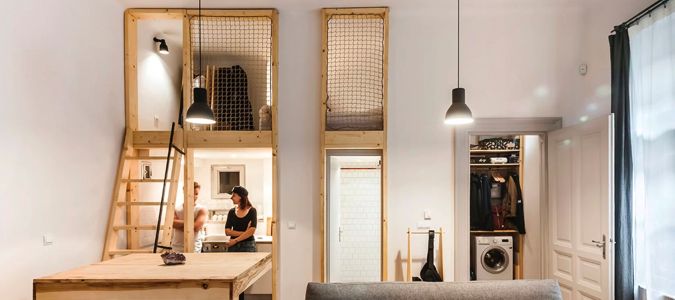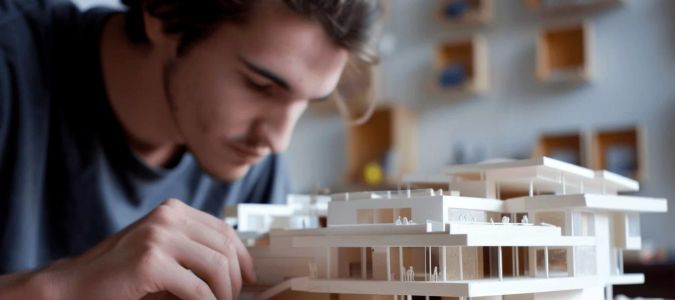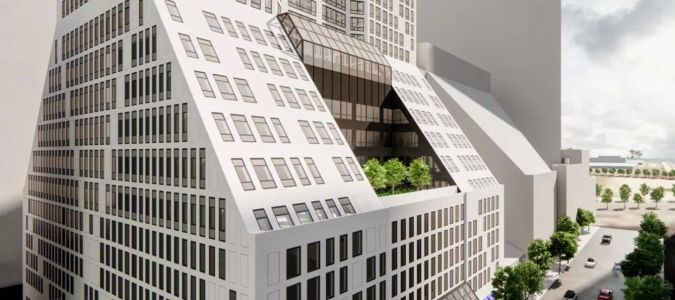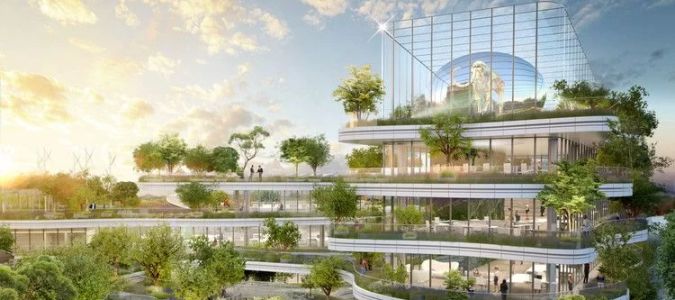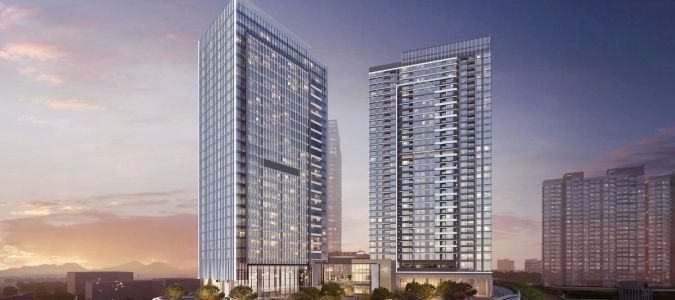How Architects Create Designs That Prioritize Both Functionality and Beauty
- 1. Understanding the Balance Between Functionality and Beauty
- 2. Key Principles Architects Follow for Effective Design
- 3. Real-World Examples of Beautiful and Functional Designs
- 4. The Role of Technology in Modern Architecture
- 5. Sustainable Architecture: Combining Functionality, Beauty, and Environment
- 6. How Architects Approach Clients' Needs and Preferences
- 7. Conclusion: The Ongoing Pursuit of Harmonizing Function and Aesthetic
1. Understanding the Balance Between Functionality and Beauty
In the world of architecture, the goal of combining functionality and beauty is not just an aesthetic choice—it's essential. Architects are tasked with creating structures that serve practical needs while also pleasing the eye. This delicate balance requires a deep understanding of both design principles and the client's vision. Whether designing a family home or a corporate building, an architect must consider how the space will be used and how it will feel. This is a complex challenge, yet it's one that architects take on with careful planning and creativity. The challenge of harmonizing these two elements, functionality and beauty, is what makes architecture both an art and a science.
2. Key Principles Architects Follow for Effective Design
Architects rely on a set of core principles to create designs that balance both functionality and beauty. These principles guide their decisions at every stage of the design process, from conceptualization to execution.
2.1. Understanding the Purpose of the Space
The first step in creating a functional and beautiful design is understanding the purpose of the space. Is it a home, an office, a public space, or a commercial building? Each type of space has its own functional requirements. For instance, a family home may require practical layouts that foster communication and comfort, while an office building might prioritize flexibility and efficiency. Architects must understand these functional needs to make the space work before considering how it will look.
2.2. Space Planning and Layout
Once the purpose of the space is understood, the architect moves to space planning. This involves organizing the interior layout, ensuring the space is maximized for functionality. The architect must account for factors such as flow, traffic, accessibility, and the needs of its users. A beautiful design can only emerge when the space’s function is optimized. Architects often work with engineers and interior designers to fine-tune every aspect of a space, ensuring everything from the floor plan to the furniture placement contributes to a harmonious experience.
2.3. Material Selection and Aesthetic Details
The materials used in a design contribute significantly to both its functionality and beauty. The right material can make a space feel luxurious, sturdy, and comfortable, while also serving a practical function. Architects carefully select materials not only for aesthetic value but also for their durability, maintenance requirements, and environmental impact. A simple material like concrete can be used in a way that is both functional and beautiful, contributing to the overall design's character.
3. Real-World Examples of Beautiful and Functional Designs
There are numerous examples where architects have successfully created designs that prioritize both beauty and functionality. These examples illustrate how architects meet client needs while also producing stunning spaces.
3.1. The Sydney Opera House
The Sydney Opera House is one of the most iconic examples of a building that combines beauty and functionality. Designed by Danish architect Jørn Utzon, the Opera House's sail-like design is visually stunning, but it was also designed to optimize acoustics and seating arrangements for its performance space. The design reflects both artistic expression and practical function, making it a true architectural masterpiece.
3.2. The Louvre Pyramid
The Louvre Pyramid in Paris, designed by architect I. M. Pei, blends modern aesthetics with historical architecture. While it serves as the entrance to the world-renowned museum, the glass and metal pyramid structure provides ample natural light, enhancing the visitor experience while maintaining the historic integrity of the Louvre building. The functionality of the space is enhanced by this minimalist design, proving that functionality and beauty can coexist.
4. The Role of Technology in Modern Architecture
Modern architecture increasingly relies on technology to design spaces that are not only functional but also beautiful. Advancements in computer-aided design (CAD) software, 3D modeling, and virtual reality (VR) allow architects to experiment with complex designs and visualize how their creations will function in the real world.
4.1. The Impact of CAD and 3D Modeling
CAD software allows architects to design and simulate buildings before they are physically constructed. With this tool, architects can test the functionality of their designs, ensuring they meet specific needs such as lighting, airflow, and usability. They can also make aesthetic adjustments, experimenting with various materials and shapes without having to build physical models. This not only saves time and resources but also leads to more innovative and efficient designs.
4.2. Sustainable Design Through Technology
In today’s world, sustainability is a priority in many architectural designs. Technology plays a significant role in making buildings energy-efficient, using materials that minimize environmental impact, and creating spaces that are both sustainable and visually appealing. For example, green roofs, solar panels, and energy-efficient HVAC systems are becoming integral parts of architectural design that fulfill both functional and aesthetic needs.
5. Sustainable Architecture: Combining Functionality, Beauty, and Environment
Sustainability is no longer just a trend—it’s a necessity in modern architecture. Many architects are now creating designs that not only prioritize functionality and beauty but also minimize their environmental footprint. Sustainable architecture blends cutting-edge technologies with natural materials to create spaces that are both functional and environmentally responsible.
5.1. Green Building Materials
Architects are increasingly turning to sustainable materials such as recycled steel, bamboo, and reclaimed wood to create beautiful, eco-friendly designs. These materials not only serve a functional purpose but also add to the visual appeal of the space. By selecting materials that are both durable and sustainable, architects can reduce the environmental impact of their designs.
5.2. Energy-Efficient Designs
Energy-efficient designs are essential to reducing a building's long-term environmental impact. Architects are now integrating renewable energy sources like solar panels, wind turbines, and geothermal systems into their designs to reduce energy consumption. This shift toward energy efficiency benefits both the environment and the building’s occupants by lowering utility costs and reducing the carbon footprint.
6. How Architects Approach Clients' Needs and Preferences
One of the most important aspects of architectural design is how architects work closely with their clients to understand their unique needs and preferences. Through in-depth discussions and collaboration, architects ensure that the design aligns with the client’s vision while also meeting functional and aesthetic requirements.
6.1. Listening to the Client's Vision
Successful architectural designs begin with a thorough understanding of the client’s needs. Whether it’s a family home, a corporate office, or a public space, architects take the time to listen to their clients and understand their vision. This ensures that the final design reflects the client's priorities, whether it's creating a warm, inviting home or a high-performance workspace.
6.2. Tailoring Designs to Fit Specific Needs
Every client has unique needs. For example, a family home may need a large kitchen for entertaining, while a corporate building may prioritize open, collaborative spaces. Architects work with clients to tailor designs that are not only functional but also reflect their personal style, preferences, and goals. This customization ensures that the final design works for the client while also meeting professional architectural standards.
7. Conclusion: The Ongoing Pursuit of Harmonizing Function and Aesthetic
The pursuit of creating designs that balance both functionality and beauty is at the heart of architectural practice. Architects continue to innovate, leveraging technology, sustainability, and creative thinking to design spaces that meet the needs of their clients while also standing as aesthetic landmarks. Whether designing a simple home or a grand public space, the balance between function and beauty remains the cornerstone of great architectural design.
If you're interested in exploring more about how architects combine these two essential elements, visit 10 Jay Street for a deeper dive into the art of architecture and design.




